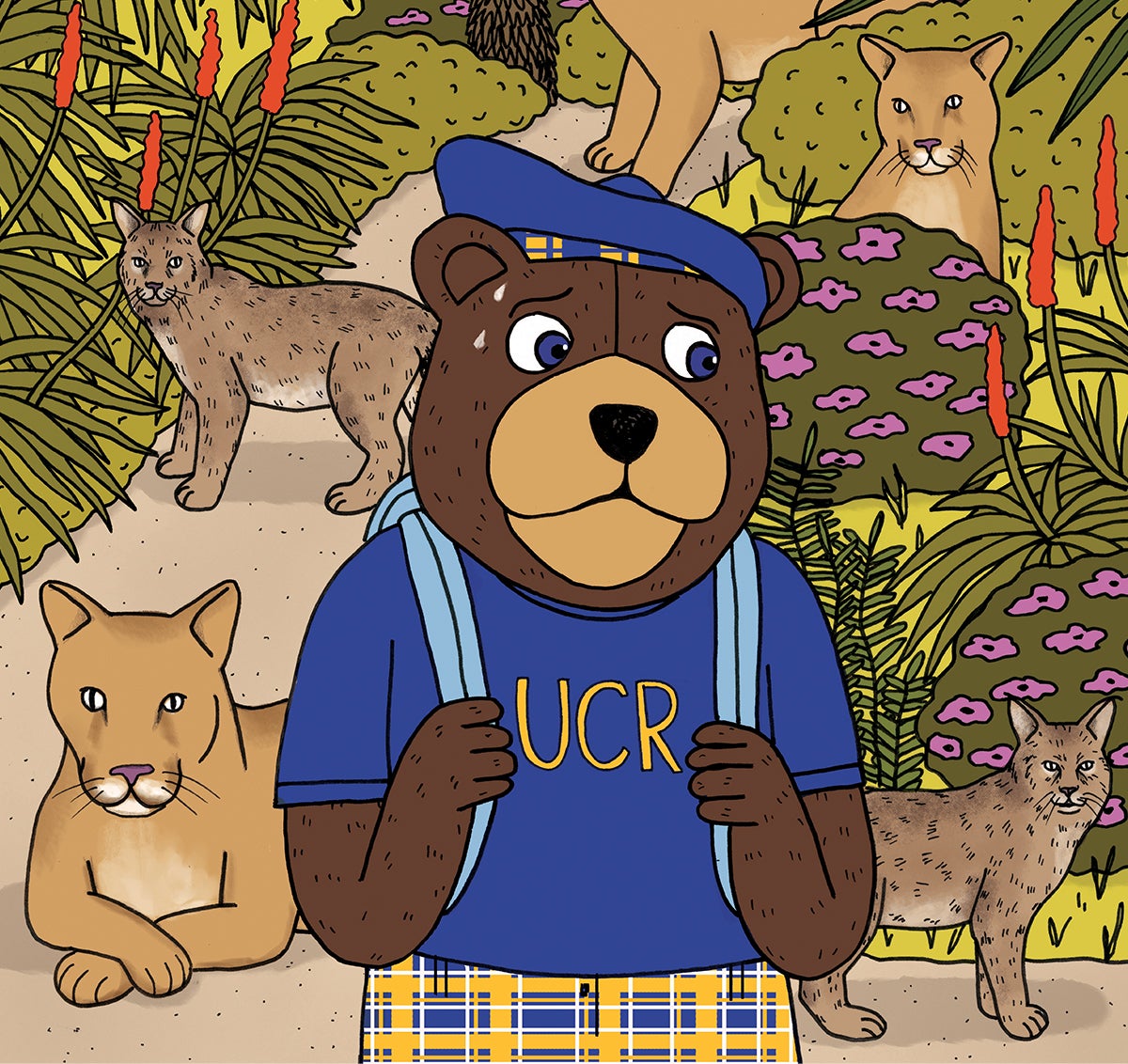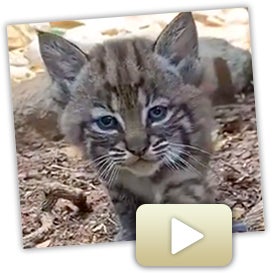HEAR ME ROAR?
Experts discuss the rumor that mountain lions roam the UC Riverside campus.
By Holly Ober | Illustration by Mal Ly Degnan
estled against the Box Springs Mountains, with the 40-acre Botanic Gardens forming most of its southern border, the UC Riverside campus rubs shoulders with valuable habitat for many species of birds, mammals, reptiles, and insects. A persistent rumor holds that mountain lions are among the big cats that roam the more rugged parts of campus and nearby mountains. Janine Almanzor, curator of the Botanic Gardens, said staff have not sighted a mountain lion, but there have been anecdotal reports.
“A few years ago, a visitor said he saw one jump over the west fence of the gardens into the arroyo area between the Botanic Gardens and the campus. He said it was about 160 pounds and had a long tail. That sounds like a mountain lion, but the staff never saw it, and he didn’t take a picture,” she said.
Jodie Holt, director of the Botanic Gardens, said the facility does have resident bobcats, some of which have had kittens.
“One bobcat that has been puzzled over is tall and lanky, which could have led to speculations about mountain lions.” she said.
Adult mountain lions, also called cougars or pumas, are about 2-3 feet high at the shoulder - and weigh between 65-220 pounds, depending on sex, with close-cropped, smooth, tawny coats and a long, cylindrical tail. Females and males both vaguely resemble a slender African lioness and prefer to hunt deer. Bobcats fall somewhere between a very large house cat and a medium-sized dog —12-24 inches tall and 9-40 pounds. They sport shaggy, tan coats with spots that might not be noticeable from a distance, and a short, stubby tail about 4-6 inches long.
Bobcats hunt small animals, like rabbits, and are common throughout North America. So how can something small enough to fit on a person’s lap be confused for something big enough to kill a deer? “Bobcats get mistaken for mountain lions all the time,” said Anne Hilborn, a postdoctoral scholar in the Department of Evolution, Ecology, and Organismal Biology who studies cheetahs and other big cats. “Unless you have a fair amount of experience with both, it’s hard to assess the size difference. So if you see an unfamiliar tan cat, you think cougar.”
Dick Newell, a biologist and expert wildlife tracker who volunteers at the UCR Herbarium, recalled discovering a pile of mountain lion scat during a lunchtime walk through the avocado orchard up the hill behind the herbarium about three or four years ago.
“It was full of deer hair, like mountain lion scat always is,” he said.
The road had been driven over too many times to hold tracks, but there was no doubt in Newell’s mind that it came from a mountain lion.
“It wasn’t steaming fresh, and it was obvious the mountain lion wasn’t living in the area. It was just passing through,” he added.
Other than Newell’s find, herbarium curator Andrew Sanders said he hasn’t heard of a cougar near campus for a few decades. Plaster casts of fresh mud tracks at the end of Big Springs Road were taken around 30 years ago.
“They’re scarce and elusive, but they’re around,” he said.
Winston Vickers, a veterinarian who directs the California Mountain Lion Project at UC Davis’ Karen C. Drayer Wildlife Health Center, has co-authored numerous studies of the lion population in the Santa Ana Mountains of northern San Diego and southern Riverside counties. He was part of a team that studied and ultimately recommended a wildlife undercrossing beneath the 15 freeway in Temecula to prevent inbreeding and help that population survive.
“It is certainly possible, even likely, that occasionally a mountain lion might show up in your vicinity, but I would imagine it would be just very occasional,” Vickers said. “UCR and Box Springs Mountains are at the west end of a long, narrow area that, from a mountain lion’s perspective, is less than ideal habitat.”


